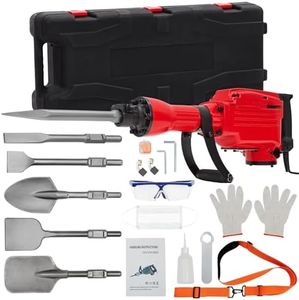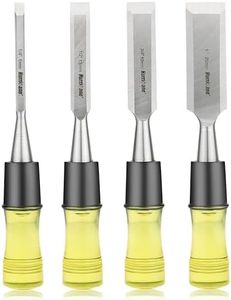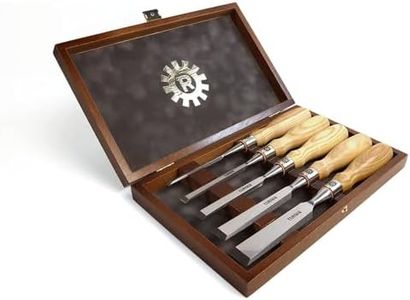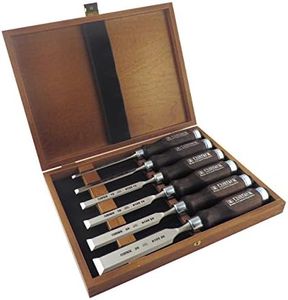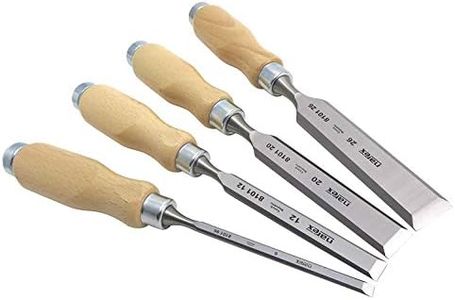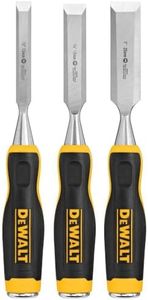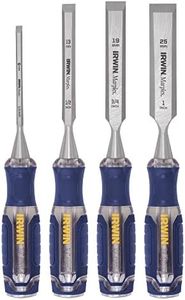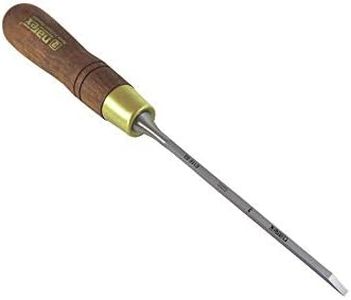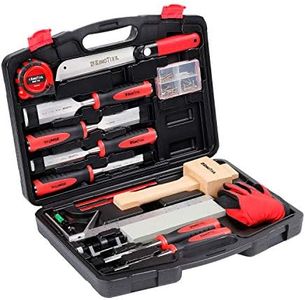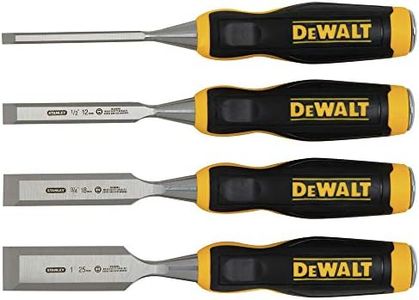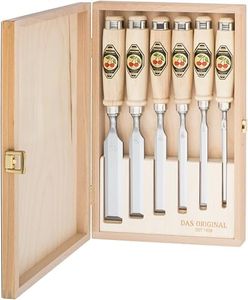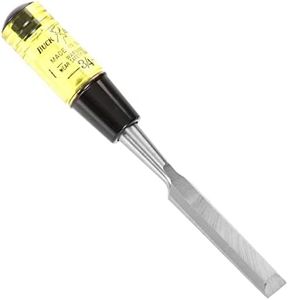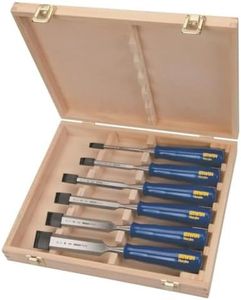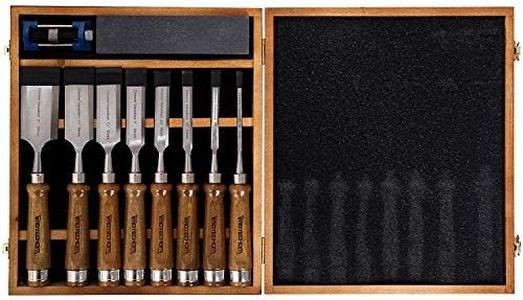10 Best Chisels 2025 in the United States
Our technology thoroughly searches through the online shopping world, reviewing hundreds of sites. We then process and analyze this information, updating in real-time to bring you the latest top-rated products. This way, you always get the best and most current options available.

Our Top Picks
Winner
HURRICANE 4 Piece Wood Chisel Set for Woodworking, CR-V Steel Beveled Edge Blade, Durable PVC High Impact Handle Wood Chisel
Most important from
6388 reviews
The HURRICANE 4 Piece Wood Chisel Set is a versatile choice for woodworking tasks, featuring blades made from durable chromium-vanadium steel. This material is known for its durability and edge retention, making it suitable for both soft and hard wood as well as laminated wood products. The set includes four different blade widths (1/4", 1/2", 3/4", and 1"), providing flexibility for various carving needs.
Each chisel has a bevel edge, which aids in multi-purpose woodworking and precision tasks. The PVC high impact handles are designed for durability and comfort, though some users might prefer handles made from wood or other materials for a more traditional feel. The lacquer coating on the blades helps protect and lubricate them for smooth cutting. Additionally, a full length blade guard is included for added safety during storage.
This set is particularly suitable for hobbyists and DIY enthusiasts looking for a reliable and affordable chisel set for various woodworking projects. The length and weight of the chisels might be a consideration for those looking for a more lightweight or compact option.
Most important from
6388 reviews
Narex Richter Bevel Edge Chisel Set of 5
Most important from
183 reviews
The Narex Richter Bevel Edge Chisel Set of 5 is a great choice for woodworkers looking for a reliable and aesthetically pleasing set of chisels. One of the standout features is the quality of the blade material, made from alloy steel, which provides good durability and edge retention. The included sizes—1/4", 3/8", 1/2", 3/4", and 1"—offer versatility for various woodworking tasks, making this set suitable for both beginners and experienced craftsmen alike.
The traditional ash wood handles are another highlight. They are designed to be light yet strong, allowing for comfortable use over extended periods. The smooth finish and secure fastening with a ground steel ferrule add to their durability and ensure that they won't fall apart with regular use. The set also comes in a beautiful presentation box, making it a thoughtful gift for woodworking enthusiasts.
There are a few considerations to keep in mind. The bevel edge might not be the best choice for every type of woodworking project. While they excel in certain applications, users looking for a chisel that can handle more intricate or detailed work might need to look for other options. Additionally, while the corrosion-inhibiting oil is a good feature, some users may prefer a more extensive maintenance guide to keep the tools in top condition.
Most important from
183 reviews
Narex 6 pc Set 6 mm (1/4), 10 (3/8), 12 (1/2), 16 (5/8), 20 (13/16), 26 (1-1/16) Woodworking Chisels in Wooden Presentation Box 853053
Most important from
616 reviews
The Narex 6 pc Woodworking Chisel Set stands out as a high-quality option for those looking to enhance their woodworking projects. One of its main strengths is the blade material; made from chrome-manganese steel, these chisels are finely tempered and hardened to Rc 59, ensuring durability and the ability to maintain a sharp edge for longer periods. The bevel ground at a 25-degree angle allows for precision cutting, making these chisels suitable for a variety of tasks, from detailed carving to general woodworking. The set includes six different sizes (ranging from 6 mm to 26 mm), providing versatility for various applications, which can be particularly beneficial for both hobbyists and professionals alike.
The presentation box is another highlight, as it not only keeps the chisels organized but also adds a touch of elegance, making it a great gift for woodworking enthusiasts.
There are a few drawbacks to consider. While the handles are made from stained European Beech, some users might find them less comfortable for extended use compared to chisels with ergonomic grips. Additionally, since the set is primarily designed for woodworking, it may not be suitable for heavier-duty tasks or harder materials, which could limit its functionality for some users.
The Narex chisel set is a well-crafted option for woodworkers seeking reliability and precision, though those looking for extensive comfort features or versatility in harder materials may need to explore additional options.
Most important from
616 reviews
Buying Guide for the Best Chisels
Choosing the right chisel can make a significant difference in the quality and ease of your woodworking or carving projects. When selecting a chisel, it's important to consider the type of work you'll be doing, the materials you'll be working with, and your own skill level. Understanding the key specifications of chisels will help you make an informed decision and ensure you get the best tool for your needs.FAQ
Most Popular Categories Right Now
